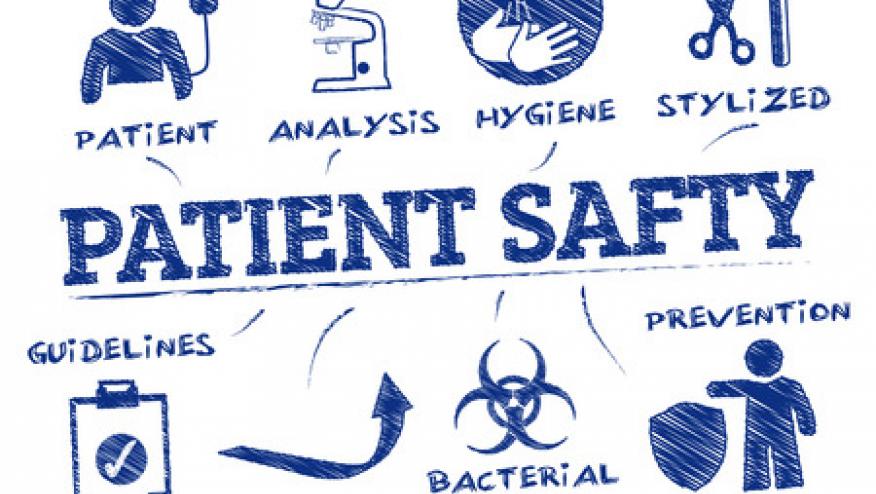ICYMI: JAK Inhibitor Misses Endpoint in Safety Study. Now What? Save

Pfizer announced results Wednesday from its FDA-mandated postmarketing safety study of tofacitinib (Xeljanz), and they don't bode well for the drug and possibly others in its class.
Compared with patients taking tumor necrosis factor (TNF) inhibitors, those assigned to tofacitinib (5 or 10 mg/day combined) in the randomized, open-label ORAL Surveillance trial showed significantly higher rates of adjudicated malignancies (11.3 vs 7.7 per 1,000 person-years of drug exposure; HR 1.48, 95% CI 1.04-2.09).
Numerically higher rates of major adverse cardiovascular events (MACE) were also seen with the JAK inhibitor (9.8 vs 7.3 per 1,000 person-years; HR 1.33, 95% CI 0.91-1.94), which missed the trial's criteria for non-inferiority.
Tofacitinib, an oral drug, is approved for rheumatoid arthritis, psoriatic arthritis, ulcerative colitis, and polyarticular course juvenile idiopathic arthritis. The safety study randomized 4,362 patients with at least one cardiovascular risk factor to either 5 or 10 mg/day tofacitinib or to a TNF inhibitor. The latter was adalimumab (Humira) for patients in the U.S., Canada, and Puerto Rico, and etanercept (Enbrel) in other countries.
Adverse events were pooled for the two tofacitinib doses for evaluating the primary endpoints. Incidence rates for MACE were slightly higher with the 10-mg versus 5-mg dose (10.5 vs 9.1 per 1,000 person-years); rates of malignancies did not differ between dosages. Following a signal for increased risk of pulmonary embolism and mortality at the higher dose, patients in the 10-mg arm were moved to the 5-mg dose in early 2019.
Adjudicated MACE*
|
|
Tofacitinib 5 mg BID |
Tofacitinib 10 mg BID** |
Tofacitinib Doses Combined |
TNFi |
|
Total number of subjects |
1455 |
1456 |
2911 |
1451 |
|
IR (95% CI) (#events/100 person-years) |
0.91 (0.67, 1.21) |
1.05 (0.78, 1.38) |
0.98 (0.79, 1.19) |
0.73 (0.52, 1.01) |
|
HR (95% CI) for tofacitinib vs TNFi |
1.24 (0.81, 1.91) |
1.43 (0.94, 2.18) |
1.33 (0.91, 1.94)**** |
|
Adjudicated Malignancies Excluding NMSC*
|
|
Tofacitinib |
Tofacitinib |
Tofacitinib Doses Combined |
TNFi |
|
Total number of subjects |
1455 |
1456 |
2911 |
1451 |
|
IR (95% CI) (#event/100 person-years) |
1.13 (0.87, 1.45) |
1.13 0.86, 1.45) |
1.13 (0.94, 1.35) |
0.77 (0.55, 1.04) |
|
HR (95% CI) for tofacitinib vs TNFi |
1.47 (1.00, 2.18) |
1.48 (1.00, 2.19) |
1.48 (1.04, 2.09)**** |
|
Cancer and MACE safety signals had been noted in the drug's clinical trials and later postmarketing reports, leading to cautions on tofacitinib's label, including boxed warning about increased mortality, thrombosis, and lymphoma and other malignancies.
But the confirmation in a large, dedicated study may put more pressure on the FDA to further restrict the drug or even pull it from the market. Tofacitinib's main advantage over TNF inhibitors is convenience, as the latter must be given by infusion or injection; efficacy has generally been seen as comparable.
Pfizer noted that it had not completed analyses in ORAL Surveillance other than for the co-primary outcomes of MACE and malignancies. The study is also expected to yield data on other safety endpoints such as pulmonary embolism and mortality, as well as on comparative effectiveness. The company "is working with [the FDA] and other regulatory agencies to review the full results and analyses as they become available," its press release said.
ORAL Surveillance began in 2014, about 18 months after tofacitinib was first approved for rheumatoid arthritis. Since then, other JAK inhibitors winning approval include baricitinib (Olumiant) and upadacitinib (Rinvoq). Those agents, too, carry boxed warnings about infections, thrombosis, and cancer risk. Baricitinib's maker was also required to perform a postmarketing safety study (expected to complete in 2025 for primary endpoints), while upadacitinib's was not.
Join The Discussion
great tanks
but when consider previous or current comorbidity (BMI, DM, pre malignancy ,smoking ) for each side effect alone no significant difference between Tofacitinib and TNF
But ....
Everyone in this study is "high risk" and has a comorbidity. Hence, your assertion cannot be correct, as the pre-release of top line results state there was a difference between tofa and adalimumab.
More importantly, we have been waiting for many months for Pfizer and the FDA to finalize and publish their full analysis - we need to wait till then to know if your statement is true or not.
Like you, Im awaiting these results as it may change future treatment of RA patients. Thanks for your thoughtful comment.
I have presentations from Pfizer company
I can sharing it with you and looking for your great comments
My emails
dr.maged2006@gmail.com









If you are a health practitioner, you may Login/Register to comment.
Due to the nature of these comment forums, only health practitioners are allowed to comment at this time.